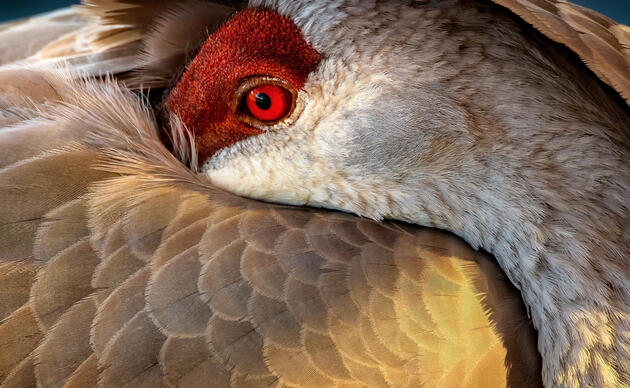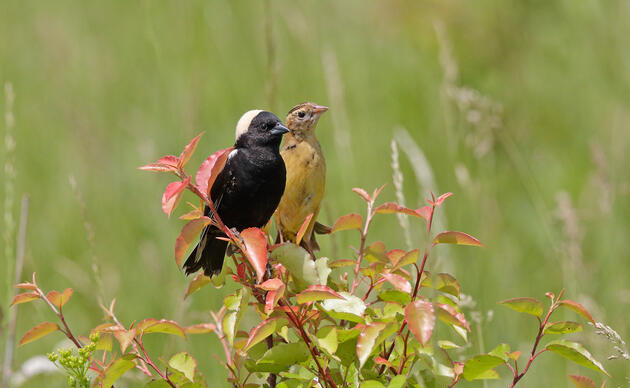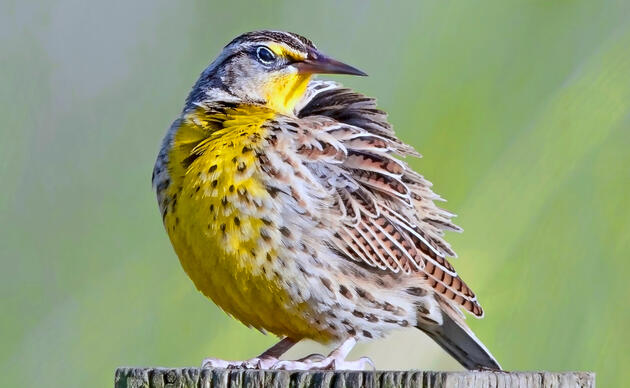Before dawn, the grasslands are nearly silent. Silent, but for the crunching of grass beneath my feet and the melancholy chorus of distant coyotes. Illuminated by naught but the moon, I silently stride through the remnant patches of tallgrass prairie that streak through eastern North Dakota. With how saline the soil is, it’s no wonder that the prairie sod had never been broken and developed into farmland. Though this land is unproductive for cash crops like corn and soybeans, it holds a wealth of wildlife that takes advantage of this quilted patchwork of agricultural land and prairie.
My destination is an area of trampled grasses and forbs, somewhat resembling Hollywood and New Mexico’s crop circles. Little green men did not create these zones, but they were created through means that have become alien to many living across North Dakota’s prairies. As the first sign of dawn creeps quickly across the horizon, I reach the lek.
The dancing of Sharp-tailed Grouse (Tympanuchus phasianellus) (“Sharpie”) is prehistoric and primal. There’s something about the rhythmic drumroll of feathered feet, guttural ‘hiccupy’ call, and the flash of violet that places me, and many others, into a near trance-like state. Though the visual vibrance and subtle saturation of a Sharpie may pale in comparison to a rooster Ring-Necked Pheasant (Phasianus colchicus), their yearly dances are something that I look forward to every year.
Within minutes of my arrival, I am bellied out under a ghillie blanket on the edge of the lek, camera in position. Now, as the orange sun rays begin to pierce the indigo-purple gradient of the sky behind me, the waiting game begins. I’ve always noticed that the moment the sun breaks over the horizon, there is a subtle temperature drop. Where there was once a thin vapor that left my lips, now there is a small cloud of steam that escapes my exhale. It is quickly carried away on the breeze that causes the frosted blades of grass to quiver.
A sudden explosion is heard overhead as the first grouse of the morning stakes his claim on a section of sod. Soon after, several others join him. Within minutes of the first light, the once silent prairie is now inundated with the spring sounds of Sharptails. Chatter, stomping feet, and hiccups fill the air, a desperate call from the males into the rapidly illuminating sky to attract a mate. Their pleas seem to work, as a female grouse, with face absent of the bright yellow eyebrow of males, alights onto the branch of a nearby shrub. Realizing the attention of a potential mate, the males quickly increase the intensity of their displays. Where once there was only sound and squabble, now the lek has turned into a gladiatorial coliseum. Rival males drive out their competition, and, when push comes to shove, battles break out and loose feathers begin to litter the ground. More females join the committee of judges, only adding to the ferocity of the fights and the desperation of the dancing. Our galliform gladiators only slow when their audience departs, unimpressed with what they had seen. Perhaps they were hoping to find their Sharptail Spartacus, but this lek was lacking.
With the displays declining, I pack up my gear and prepare myself for the burn of blood returning to my cold extremities. More than satisfied with my experience for the morning, I depart the prairies with the promise of coffee at home.
If I had the power, I would make it mandatory for every student that graduates from a prairie state, high school or college, to visit a Sharpie lek. It may only take but a single morning of their lives, but I truly believe that it will create a connection to the land that will last the rest of their lives. I firmly believe that my first experience on a grouse lek changed the course of my life and has led me to be directly where I am now. As the North Dakota Education and Outreach Coordinator for Pheasants Forever, I am extremely lucky to be able to facilitate opportunities to share this incredible event that occurs in our regional backyards. I hope to inspire the next generation to be passionate about the wonders of the world that happen within five miles of home.
I hope to encourage them to go get lost.
Seth Owens, Pheasants Forever





